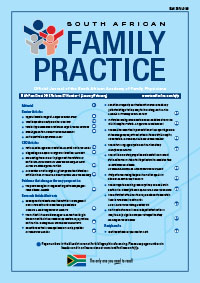The nutrient intake of children aged 12–36 months living in two communities in the Breede Valley, Western Cape province, South Africa
Keywords:
Macronutrients, micronutrients, food frequency questionaire, nutrient intake, young children
Abstract
Objective: The objective of this study was to describe the current macro- and micronutrient intake of young children (both boys and girls) in two selected communities in the Breede Valley, Worcester. Design: This was a quantitative cross sectional study. Setting: The study focused on two disadvantaged communities in Worcester (Avian Park and Zweletemba) in the Breede Valley, Western Cape Province. Subjects: The study subjects were 248 children (Avian Park, n=117, Zweletemba n=131) aged of 12–36 months. Methods: The macro- and micronutrient intake of the children was determined using a validated interviewer-administered quantitative food frequency questionaire (QFFQ) and compared against the estimated average requirement (EAR), and Adequate Intake (AI) of nutrients. The Nutrient Adequacy Ratio (NAR) was calculated as well as percentage deviation from EAR/AI. Results: More than 20% of the children had calcium and folate intake that deviated by more than 50% below the EAR. More participants in Zweletemba had an intake that deviated with more than 50% above the EAR/AI compared to Avian Park for carbohydrate, thiamine, niacin and iron. Conclusion: With the exception of folate, calcium and selenium, average reported nutrient intakes of children (boys and girls) in both communities were adequate. (Full text available online at www.medpharm.tandfonline.com/ojfp) S Afr Fam Pract 2015; DOI: 10.1080/20786190.2014.975490
Published
2015-03-16
Section
Research Articles
By submitting manuscripts to SAFP, authors of original articles are assigning copyright to the South African Academy of Family Physicians. Copyright of review articles are assigned to the Publisher, Medpharm Publications (Pty) Ltd, unless otherwise specified. Authors may use their own work after publication without written permission, provided they acknowledge the original source. Individuals and academic institutions may freely copy and distribute articles published in SAFP for educational and research purposes without obtaining permission.

